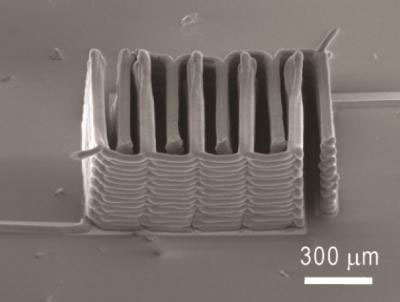From NanoWerk News:
| 3D printing can now be used to print lithium-ion microbatteries the size of a grain of sand. The printed microbatteries could supply electricity to tiny devices in fields from medicine to communications, including many that have lingered on lab benches for lack of a battery small enough to fit the device, yet provide enough stored energy to power them. | |
| To make the microbatteries, a team based at Harvard University and the University of Illinois at Urbana-Champaign printed precisely interlaced stacks of tiny battery electrodes, each less than the width of a human hair. | |
| "Not only did we demonstrate for the first time that we can 3D-print a battery, we demonstrated it in the most rigorous way," said Jennifer Lewis, Ph.D., senior author of the study, who is also the Hansjörg Wyss Professor of Biologically Inspired Engineering at the Harvard School of Engineering and Applied Sciences (SEAS), and a Core Faculty Member of the Wyss Institute for Biologically Inspired Engineering at Harvard University. Lewis led the project in her prior position at the University of Illinois at Urbana-Champaign, in collaboration with co-author Shen Dillon, an Assistant Professor of Materials Science and Engineering there. | |
| The results will be published online on June 18 in the journal Advanced Materials ("3D Printing of Interdigitated Li-Ion Microbattery Architectures"). | |
 |
|
| For the first time, a research team from the Wyss Institute at Harvard University and the University of Illinois at Urbana-Champaign demonstrated the ability to 3-D print a battery. This image shows the interlaced stack of electrodes that were printed layer by layer to create the working anode and cathode of a microbattery. |